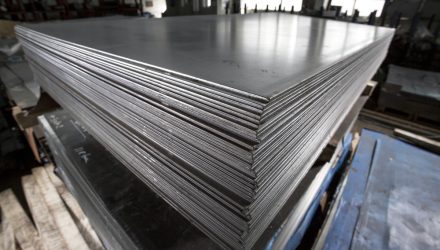Strong demand for steel is driving prices higher in China, which bodes well for the VanEck Vectors Steel ETF (SLX).
Higher steel prices is also a harbinger for inflation. As commodities like steel continue to tick higher, the general feeling is that commodities in general will experience the same price hikes.
“The decision by Chinese steel mills to fire up prices amid soaring raw material costs has raised concern about inflation risks in the world’s second largest economy and the impact this may have on smaller manufacturers who cannot pass on higher costs,” a South China Morning Post article noted.
“Commodity prices are above pre-pandemic levels in China, with the cost of iron ore, one of the main ingredients used to make steel, hitting a record high of US$200 per tonne last week,” the article said further.
SLX tries to reflect the performance of the NYSE Arca Steel Index, which follows global companies involved in the steel industry. While more than a third of SLX’s lineup is allocated to U.S. steel producers, the ETF has a heavy global tilt, including exposure to ex-U.S. developed markets and emerging markets steel companies.
SLX investors get:
- One-Trade Access to the Steel Industry: An industry supporting global industrialization.
- A Pure Play with Global Scope: Includes companies involved in a variety of activities related to steel production.
- Convenient Customization: Customize overall commodity exposure with targeted allocation to steel companies.
- Strong Performance: The fund is up over 50% year-to-date.
A Commodity Hedging Option
Commodities can serve as a barometer for economic health. When the economy is picking up steam the way, demand for commodities increases.
An additional commodities benefit is their ability to help hedge against inflation. When the economy is surging, prices tend to drift higher, and that translates itself to commodities.
ETF investors can use funds like SLX for specialized commodities exposure. As consumer prices run higher, getting exposure to steel can help serve as a portfolio hedge.
“Steel prices have been climbing since February,” the South China Morning Post article said. “Prices rose 6.3 per cent in April after gains of 6.9 per cent in March and 7.6 per cent the previous month, according to the South China Morning Post’s calculations based on China’s domestic steel price index, which is published by the Steel Home consultancy.”
For more news and information, visit the Beyond Basic Beta Channel.








